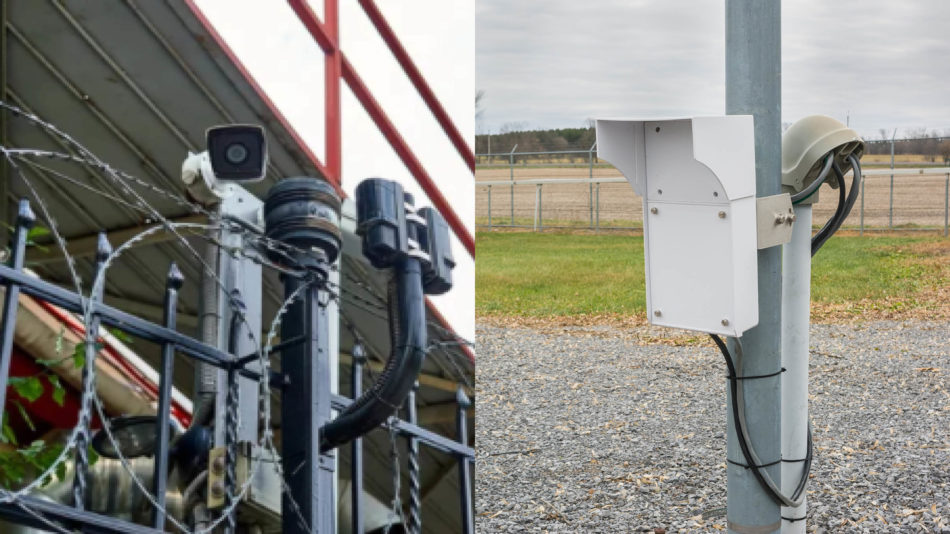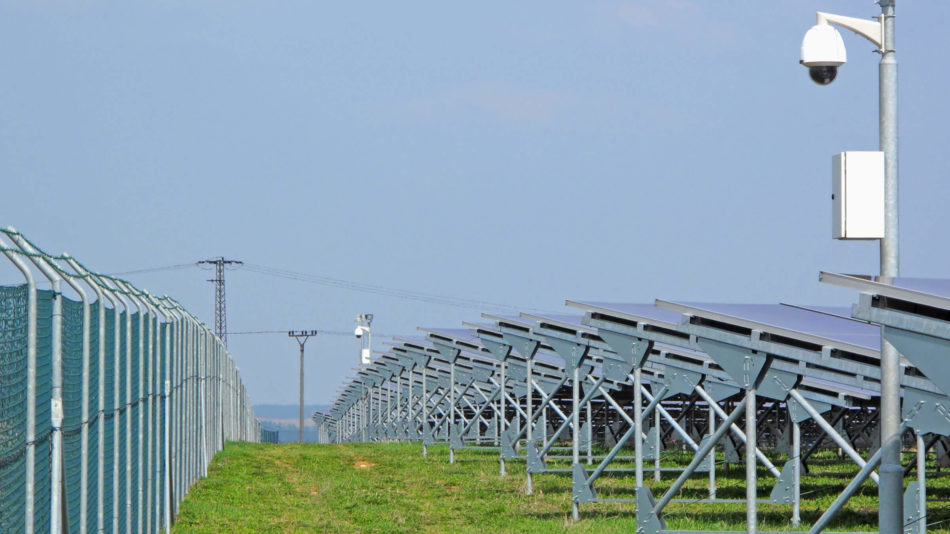Infrared or Microwave: Which is Best for Your Perimeter Security?

Choosing to install perimeter security is an easy decision. The hard part is deciding what kind of security system is best for you. While there are many factors to take into account, if yours is a high-security environment like a power plant, correctional facility, factory, or warehouse, you may be considering infrared or microwave technology as part of your solution.
As a provider of advanced perimeter intrusion detection systems, we at Senstar are familiar with high security customer challenges and wanted to share our knowledge of both technologies. Here’s what you need to consider with each solution and how they differ.
Active IR: A Virtual Barrier
High-security or industrial-grade IR solutions (called active IR or IR beam) are significantly different from their hardware store counterparts (passive IR), which are more sensitive to spurious alerts, have narrower operating temperatures, and can be easier to defeat. An active IR system uses two components – one transmitting an IR beam and one receiving it – that work together to protect a path, gate, or building entrance. An object that is large enough to interrupt the beam will trigger an alarm.
Most products generate several IR beams, mixing both sending and receiving functions on the same unit to provide better system redundancy or to assist with sensor alignment. They also often send a continuous train of rapid pulses rather than an always-on IR laser, allowing them to use less power.
These systems usually have a range of anywhere between 15 and 150 m (or 50 to 500 ft) and work well for creating a virtual barrier to protect areas of ingress or ingress/egress. Think of an IR system as an invisible fence; in other words, don’t use it to protect a volume of space but rather protect against persons crossing a line between two points.
Microwave Sensors: Movement Within an Area
High-security microwave sensors also consist of two components – a transmitter and a receiver – that act to form a detection barrier. However, rather than a beam, microwave radiation measures the spatial changes between the sensors. This volumetric detection makes them more sensitive, which can be more difficult to defeat than an IR system. (Commercial systems differ from their consumer counterparts in that they often include advanced signal processing to turn the technology’s sensitivity into an advantage.)
Microwave systems have similar, although slightly broader ranges when compared to IR: somewhere between 5 and 200 m (or 15 to 600 ft). Because they detect movement within a volume, they can be useful for monitoring large areas and paths, spaces between fences, and open areas as well as barrier-type applications. While IR systems can sometimes have slight cost advantages, microwave-based technology has technical features that make them more versatile and reliable.
Cost and Power vs Harsh Environments and Large Areas
There are advantages and disadvantages to each solution. What sorts of things should be considered before deploying IR technology versus a microwave solution? Where do they each shine when it comes to high-security perimeter detection and where do they fall short? Here’s what we know.
Animals and False Alarms
IR. False alarms can be a problem with active IR systems as they are generally activated with small mammals or birds that are only one beam-width tall. This is because a crawling person can have a similarly small cross-section. It’s sometimes possible to work around this sensitivity with beam cycle duration settings biased towards detecting slower-moving humans or with a system that requires more than one beam to be broken simultaneously.
Microwave. Microwave solutions don’t detect with an on/off beam interruption but rather with a measurable field interference. This means they can be tuned more easily to react to a creature of minimal size before triggering, reducing the number of false alarms compared to an IR system.
The Big Challenge of Weather
IR. Probably the biggest challenge faced by any IR system is weather. IR beams may require internal heating systems to avoid condensation or frost build-up on lenses in colder climates. And because fog, rain, dust, and snow can block infrared light, these weather conditions can also cause IR sensors to generate false alarms.
Microwave. Operating properly under all weather conditions is a big advantage of microwave-based solutions since microwaves are mostly impervious to the rain, fog, or snow conditions that can be troublesome for IR sensors. In fact, they have no weather-related or temperature-related worries.
Monitoring Tall Heights
IR. Because active IR beams between two adjacently mounted units may interfere with each other, you need a product designed to permit stacking units to monitor heights taller than a typical fence. Stacked systems will either multiplex the beams or use independent frequencies on adjacently stacked units that don’t interfere with each other.
Microwave. Microwave systems are just like IR systems when it comes to handling especially tall heights. If you want a tall monitoring column, find microwave systems that are designed to stack. These systems typically have individually selectable frequencies to prevent interference.
Differing Power Requirements
IR. IR systems generally have lower power requirements. If you have a consistently warm and sunny climate, you may be able to find an active IR solution that charges via solar power during the day and monitors via battery at night. This can avoid the installation of power cables that would be needed otherwise.
Microwave. Microwave solutions draw more power than their IR counterparts and so will always require hard-wired power and networking cables – they can’t operate on solar panels alone.
Vegetation – A Problem All Around
IR. Beam-breaking vegetation like stray branches or nearby ground cover swaying in the wind can be a problem for IR systems. The best solution is to cut back vegetation from around the monitoring area.
Microwave. Same goes for microwave systems. Even though microwave systems can better screen out moving trees or shrubs, our advice is to keep vegetation trimmed back to prevent false alarms, regardless of technology.
Installation and Alignment
IR. Active IR systems require precise alignment to work properly. The mounting location for each unit must be stable so that they don’t shift or torque in the wind, even slightly. Units usually need to be installed a minimal distance away from a fence, so the fence won’t interfere. However, because IR systems use a narrow beam, they are a better fit for monitoring a tight or confined space than a microwave-based solution, which covers a wider area.
Microwave. Microwave systems aren’t as sensitive to precise alignment, so can be easier to install. They are often a better choice if sensor mounting locations are prone to vibration or slight movements. However, because their detection area is larger, they need to be offset further from a fence or gate than an IR system.
Summary
Both IR and microwave solutions can provide great security perimeter detection. IR systems can sometimes have slight cost and power advantages, although microwave systems tend to operate better in harsh environments or when large areas are involved. While both types of system can generate false alarms under certain circumstances, they have different approaches to handling triggers. Microwave technology intelligently processes sensor data to allow the system to screen for human intruders versus other types of disturbance while IR systems tend to manage this through configuration options and beam timing to fit different applications.
At Senstar, we have a wealth of experience in developing and installing high-security perimeter solutions and we’d be happy to share our knowledge about either technology if you have any questions. For more information about microwave intrusion detection, check out Senstar’s UltraWave, a volumetric fully digital, bi-static microwave sensor.

